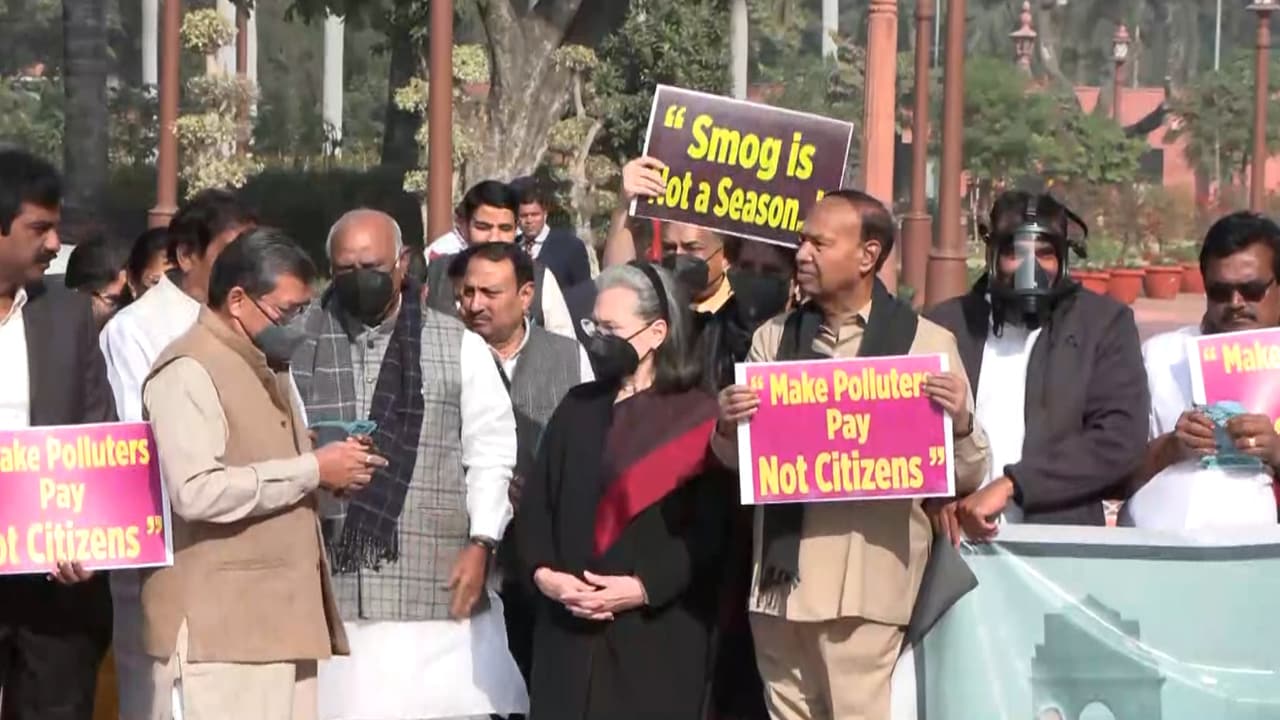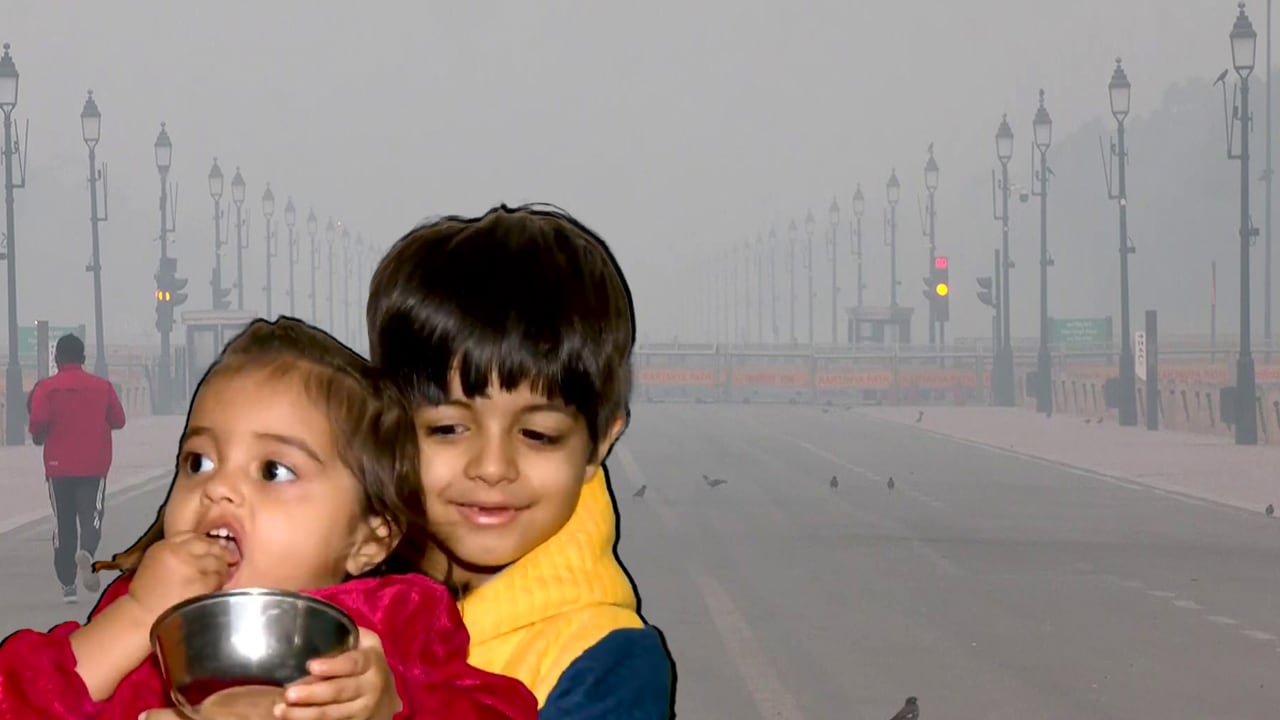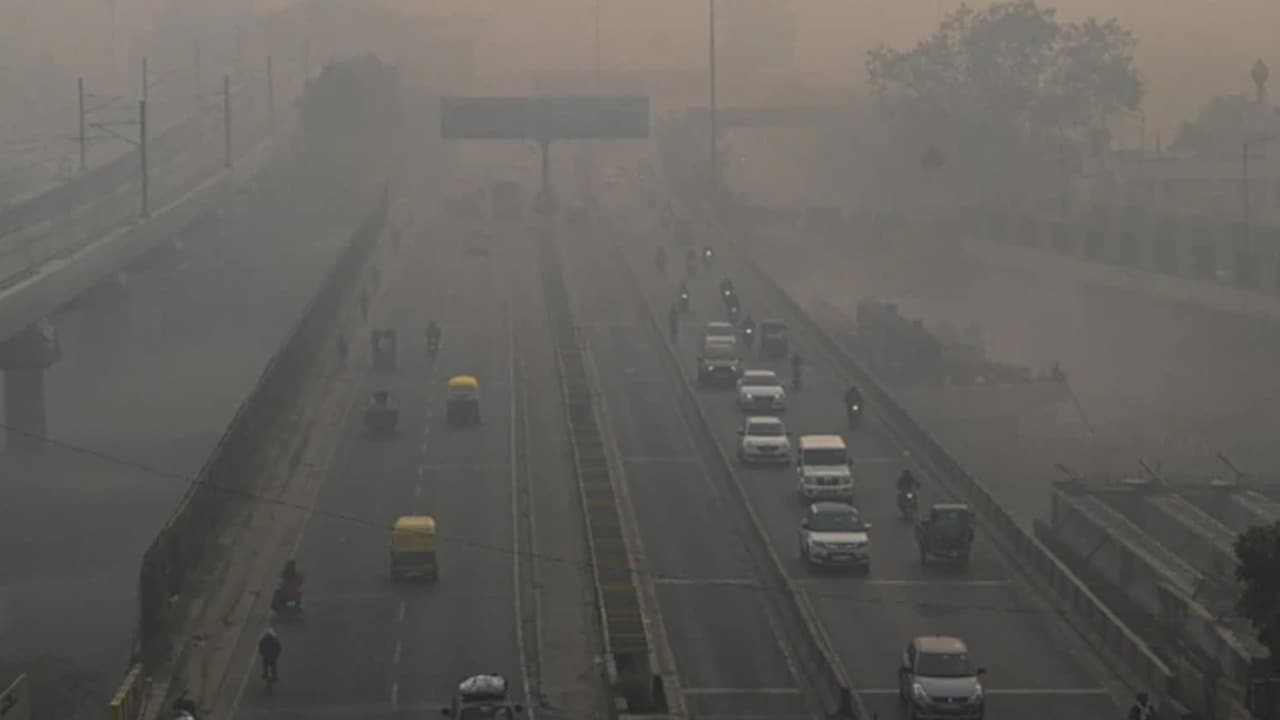- Home/
- 1 In 7 Deaths In Delhi In 2023 Linked To Air Pollution, Finds Study
1 In 7 Deaths In Delhi In 2023 Linked To Air Pollution, Finds Study

Air pollution was responsible for nearly 15 per cent of all deaths in Delhi in 2023, making it the city's single largest health risk, according to an analysis of the latest Global Burden of Disease (GBD) data.
The analysis, based on data released by the Institute for Health Metrics and Evaluation (IHME) earlier this month, estimated that around 17,188 deaths in the national capital last year were linked to long-term exposure to particulate matter (PM2.5) pollution. This means one in every seven deaths in Delhi can be traced to the city's toxic air.
Despite these alarming figures, the Union Environment Ministry has maintained that there is "no conclusive evidence" directly linking air pollution to mortality, calling it one of several contributing factors.
"A Public Health Emergency, Not Just An Environmental Issue"
Researchers at the Centre for Research on Energy and Clean Air (CREA), which analysed the GBD data, said the findings highlight the urgent need to treat air pollution as a public health emergency rather than an environmental inconvenience.
"Air pollution must now be treated foremost as a public health issue, not just an environmental one," said Dr Manoj Kumar, an analyst at CREA.
"India already has over 250 epidemiological studies establishing the link between polluted air and a wide range of health impacts. The science is clear: what's needed now is decisive, coordinated action," he said.
Dr Kumar explained that particulate matter pollution affects the human body far beyond the lungs. When inhaled, fine particles can travel deep into the lungs, reach the alveoli, and enter the bloodstream. Over time, these particles accumulate in blood vessels, reducing oxygen flow to the heart and brain, which can trigger strokes, heart attacks, and other chronic illnesses.
"Unless Delhi's air quality improves substantially, the burden of respiratory and cardiovascular diseases will only continue to rise," he said.
Deaths Rising Despite Policy Interventions
The GBD analysis shows that deaths related to air pollution in Delhi rose from 15,786 in 2018 to 17,188 in 2023, even as authorities introduced several air quality management plans. Deaths linked to high blood pressure and diabetes also increased during the same period but remained lower than those caused by air pollution.
Following air pollution, other major risk factors for mortality in 2023 included high systolic blood pressure (12.5 per cent), high fasting plasma glucose or diabetes (9 per cent), high cholesterol (6 per cent), and obesity (5.6 per cent).
CREA researchers said that despite year-to-year fluctuations, the number of deaths caused by particulate matter pollution has remained consistently high-often exceeding those linked to hypertension or diabetes.
"Pollution Is A Year-Round Crisis"
Experts said Delhi's pollution problem extends well beyond the visible smog of winter. "People assume pollution is a winter-specific phenomenon, but harmful exposure happens throughout the year. It just becomes more visible when wind speeds drop and pollutants settle close to the ground," Dr Kumar said.
According to CREA's latest PM2.5 assessment for October 2025, Delhi ranked sixth among India's most polluted cities, recording an average PM2.5 concentration of 107 µg/m³ -three times higher than its September average. Dharuhera in Haryana was the most polluted, with 123 µg/m³.
Interestingly, the contribution of stubble burning to Delhi's PM2.5 levels in October was less than six per cent, suggesting that local and year-round emission sources, particularly vehicles and industries, continue to drive pollution levels.
"Government Regulation Must Lead The Way"
Dr Kumar emphasised that while public participation is vital, large-scale improvements can only come from strong government regulation and consistent enforcement. "People's awareness helps, but regulation and implementation must come from the government. Nearly half of Delhi's pollution comes from vehicles alone," he noted.
CREA finds that Delhi's data is a reminder that effective air pollution control remains one of the most powerful public health interventions available, capable of reducing disease burden, improving quality of life, and adding years to life expectancy for millions of residents.
Latest Stories
- Reported by Ishika Verma | Thursday December 04, 2025 , New Delhi
The Delhi government on Thursday rolled out its "toughest-ever" anti-pollution drive in the capital -- deploying mist spray technology, tightening enforcement, and warning officials of strict action.
- Asian News International | Thursday December 04, 2025
India faces a severe public health emergency as air pollution worsens across major cities. Padma awardee doctors' issue urgent advisory and here is what you need to know to stay safe.
- Press Trust of India | Thursday December 04, 2025 , New Delhi
The Delhi government is preparing an extensive plan to deploy mist spray technology to combat air pollution in the capital, Chief Minister Rekha Gupta said on Thursday.
- Reported by Mohammed Ghazali | Thursday December 04, 2025 , Gurugram
Rao Narbir Singh said that most devices cannot display readings beyond 500 AQI, even when the actual pollution may be far higher.
- Asian News International | Thursday December 04, 2025 , New Delhi
Congress Parliamentary Party chairperson Sonia Gandhi on Thursday asked the Centre to take action to curb air pollution in Delhi-NCR, saying the children and elderly are suffering.
................................ Advertisement ................................
Latest Videos
Opinion
Blog | Well Done, Delhi. You've Turned Lung Sacrifice Into A Badge Of HonourSaikat Kumar Bose
Monday November 10, 2025Till some years back, Delhiites would ask angry questions to those in power about the capitals annual tryst with toxic air. This has changed. Those in the driving seat dont see the need to answer now.
Opinion | Why Indians Have Just Given Up On Air Pollution CrisisTanushree Ganguly
Friday December 20, 2024While some may argue that people in Delhi are now more aware of air pollution than they were a decade back, my rebuttal would be that awareness does not mean that people are concerned.
Opinion | You Must Outrage Over Filthy Air More Than Once A YearJyoti Pande Lavakare
Tuesday December 10, 2024Delhi welcomed us with monsoon rains and mangos. We were home. Fast forward a couple of years, in the winter of 2012, I found myself in denial about something other parents, mostly expats, were calling toxic air.
Opinion | Delhi's Air Pollution Situation Is Like A Bad MarriageNishtha Gautam
Friday November 22, 2024On a good day, such as today, the AQI reading in Delhi is 407. We are jubilant at the sickly sunshine trickling through the slightly dissipated smog. At least its not 1600.
दिवाली... पराली... सियासी जुगाली!Ashwini kumar
Monday November 18, 2024दिल्ली-एनसीआर में प्रदूषण का समाधान तो आज तक मिला नहीं. हर साल चिंतित होकर हम-आप सांसों की तकलीफ के साथ-साथ दिल और ब्लड प्रेशर के मरीज भी क्यों बनें?


















